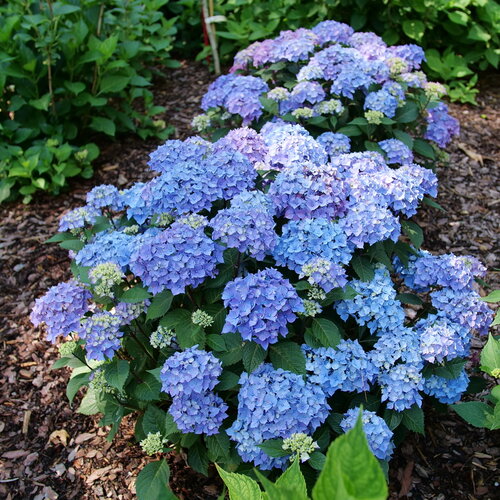The Stunning Blue Hydrangea
Blue Hydrangea A Flower of Elegance and History
Gardeners and botanists throughout the centuries have marveled at this stunning flowering shrub because of its dynamic hues and soil-responsive color transformation. People have valued Blue Hydrangea for its decorative appeal in temperate climates for many years while also recognizing its medicinal benefits in certain situations. Throughout history, until the present day, this shrub has maintained its enchanting presence due to its stunning beauty and numerous benefits.
The Historical Discovery
East Asia serves as the birthplace of this vibrant plant, which earned its first written record centuries ago. Indigenous peoples honored the plant for its aesthetic charm and sturdy nature before it gained acceptance in Japan and China and finally reached European countries during the 18th century. European explorers and botanists marveled at the plant's adaptability to various soils and climates, which led to its widespread use in gardens and estates throughout Europe. The plant achieved its status as a symbol of refinement and grace in formal landscaping before reaching North America.
Blue Hydrangea Traditional and Folk Medicine Uses
Although people mainly cultivate Blue Hydrangea for its decorative features, they have also studied its potential medicinal uses. Asian herbalists have used root and leaf extracts for hundreds of years because they think these extracts possess diuretic and anti-inflammatory benefits. Decoctions prepared from herbs served traditional medicine practices by treating urinary tract problems and supporting kidney health. People always handle this plant carefully because some of its compounds become toxic when consumed in large amounts. While modern herbalists research its possible applications in medicine, the plant remains mostly used for landscape decoration.
A Staple in Landscapes
Landscape designers prefer this breathtaking shrub because of its adaptability and attractive appearance. This plant performs well in well-drained soil that retains sufficient moisture which makes it a perfect addition to shaded gardens and both cottage-style landscapes and woodland settings. Gardeners value this plant because it alters its color based on soil pH creating a distinctive interactive feature for garden designs.
This plant displays vibrant foliage and colorful blooms during summer through fall when placed along pathways or grouped together. This plant thrives in partial shade, which allows it to become a favored option for adding vibrancy to shadowy garden spaces. Gardeners frequently use this plant in mixed perennial gardens because its rounded blossoms create a stunning contrast with neighboring flowering plants.

A Look of Pure Elegance
The shrub showcases striking, large, rounded flower clusters that transition through colors from deep sapphire to pale sky tones. Soil acidity determines the shrub’s color intensity by producing rich, cooler colors in acidic soil, while alkaline soil creates hues that shift towards purple and pink tones.
The plant’s foliage stands out, with wide leaves that show distinct serrated edges that beautifully contrast with the flowers. During autumn, the leaves display subdued yellow and red colors, which enhance the seasonal visual appeal. This plant experiences a remarkable year-round transformation from deciduous status that creates a vibrant and dynamic effect in garden settings.
The Rare Wildlife Blue Hydrangea Attracts
Humans admire Blue Hydrangea, which serves as a vital habitat for rare and beneficial wildlife species. This plant draws pollinating insects like specific bee species and butterflies because they depend on its nectar. This plant sets itself apart from numerous flowers that produce abundant pollen because its blossoms function mainly as a nectar source, which attracts pollinating insects searching for food in warmer seasons.
The plant functions as a protective habitat for small birds and insects throughout several regions. The plant creates safe nesting sites for some birds through its dense foliage, and these birds help maintain the garden by controlling pests. This plant is not primarily used for wildlife sustenance, yet it supports the development of a biodiverse and balanced ecosystem in gardens.
Conclusion
Blue Hydrangea stands out as a remarkable landscape choice because of its deep history and medicinal importance, as well as its stunning beauty and ability to sustain local wildlife. This shrub remains a source of fascination and inspiration for plant enthusiasts when placed as the central element in formal gardens or included within natural settings. The lasting appeal of this plant demonstrates its enduring charm and adaptability, which have guaranteed its continued prominence in garden settings for many years.